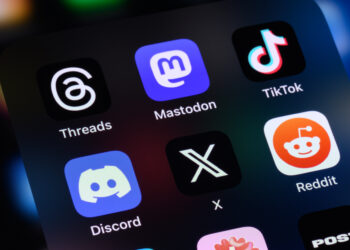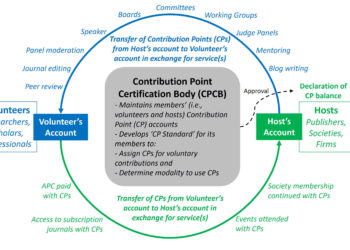
This is a speculative post, the blog equivalent of “thinking out loud.” Please read and respond with that in mind.
Is our industry suffering from a pollution problem, and in need of regulatory attention?
The Federal Trade Commission’s complaints against OMICS Publishing feels like an important inflection point in the relationship between scholarly publishers and the government. This relationship has grown more complex over the past 20 years, as publishers have come under greater scrutiny with public and open access initiatives driving much of the engagement. Now, it seems so-called “predatory publishers” are falling under the watchful eye of the government, as well.
Concerns about the quality of published research have increased during this period, and are emerging elsewhere in the world, with Chinese authorities taking actions last year against researchers involved in peer review scams. The path from the current state to one of greater regulation also seems to have been started, with governmental and political activism around how scientific publishing is funded. Once government has a role in defining acceptable funding, it seems a short step for them to begin to define what they expect to get as far as quality and quantity.
From peer review scams to reproducibility to retractions, concerns about quality have been escalating along with awareness. Explanations for the increased awareness of problems are varied and not mutually exclusive — is it due to increased transparency, increased skepticism, increased rates of publication, greater stresses on researchers and research budgets, more researchers from new research economies, lower standards of review and acceptance, a flattened and confusing discovery ecosystem, or a “gotcha” social media environment? Chances are, it’s a little bit of everything, and more.
An increasing “corporatization” of academia — with contract research organizations (CROs), affiliate and satellite entities, and hybrid corporate/academic alliances — also harkens to the days of large corporations fouling the waters for gain. A recent scandal at the Karolinska Institute is not alone in revealing the power of “academic capitalism.”
What’s becoming more apparent, as well, is the growing willingness — or grudging acceptance — of governments to do something about all of this.
It’s tempting to draw a parallel to the surge in chemical and manufacturing techniques in the early 20th century which led to flows of new substances into the air and water, which led to increased awareness of the potential damage and toxicity of these chemicals and substances to human and other life. While this awareness was emerging, the US landed on the Moon, and sent back a picture known as “Earthrise,” which galvanized the world around the “pale blue dot” that is our home, giving environmental groups a popular and powerful image of what was at stake. This global view changed opinions fundamentally, and within a few years, the Clean Water Act, the Clean Air Act, and the US Environmental Protection Agency were all established. Soon thereafter, an entire industry of environmental regulation and cleanup was born.
The benefits are easy to see, smell, and taste. Recently, Boston, home of the river that inspired the Standells’ hit song “Dirty Water,” held a beer festival in which breweries used a half-million gallons of Charles River water to make craft beers. The cleanup of the Charles has been extraordinary, with a group of scrubbers (the “Eggs”) on Deer Island taking a fouled river and returning it to swimmable, sparkling glory. Similar stories can be found across our landscape, which makes failures of environmental regulation and responsibility like the Flint, Michigan, water tragedy all the more unacceptable.
Our own “Earthrise” moment may have occurred with the emergence of Google and Google Scholar, which made the scientific literature available on a scale never before seen. Suddenly, the public became a constituent group for an industry that before had seen itself serving a more focused set of readers. Issues like “public access” grew in importance, and services like “RetractionWatch” emerged as quasi-regulators of behavior. The “reproducibility crisis” has also fueled concerns about the quality of scientific reports and the journals shepherding these through, while “predatory publishers” have drawn further attention to the pollution among research results.
Now, there is a feeling that perhaps, given the fact that broader constituencies are gaining access to scientific papers, making it easier for bad information to pollute the intellectual world, that perhaps we need a “Clean Science Act” or similar measure to ensure a few aspects of what we do:
- Adequate peer review
- Adequate disclosures of conflict of interest
- Adequate reporting of results
- Potential punishments for lack of reproducibility
- Adequate archival approaches
- Adequate retraction and correction policies
There is no clear movement afoot or definite proposal on the table as of yet, but governments and funders are turning their attention to scientific publishing in new ways, and the FTC case suggests with some willingness to begin regulating its quality.
This raises two interesting points. First, are we self-regulating so poorly that we invite external regulation? Second, is outside regulation at this point a potential benefit to science?
Self-regulation seems to be weaker and less compelling than ever. Bodies like the ICMJE are becoming less influential as the journals market moves away from a few high-impact journals and toward OA megajournals, journal families, and consolidated businesses with their own dominant cultures.
Governmental regulation is not new to the journals economy. But the friendly “hand on the shoulder” type of regulation may no longer be sufficient or well-enforced. This former quasi-governmental regulation of journals by the NLM via MEDLINE and PubMed has been eroded by a decade or more of looser standards promulgated to support PubMed Central’s rise. Other non-governmental regulatory aspects within the journals economy (e.g., having an impact factor, having an editor-in-chief) have also been loosened, dissembled, or weakened by a community focused increasingly on author satisfaction.
Self-regulatory bodies have a harder row to hoe these days as they must brace themselves for a social media space that punishes any statement they offer. This makes these voluntary groups more reluctant to generate any statements at all, while decreasing the likelihood that they will be adopted quickly or completely. The backlash (or threat of backlash) from the social media fringe has a chilling affect. Data sharing policies have suffered from these effects, even when they reflect the will of most researchers. The noise drowns out the signal, frustrating efforts to self-regulate.
Without strong self-regulation aimed at a shared endpoint, our dissipated efforts may no longer be tolerable. If self-regulation is impossible given the fragmented and unmanageable constituents of scientific publishing, external regulation becomes inevitable. More importantly, there may be no political downside to regulating the journals marketplace. And that alone may be enough to make the idea of regulating how journals operate a tempting position for someone to take.
Discussion
7 Thoughts on "Love That Dirty Water — Are We Headed Toward a "Clean Science Act"?"
An excellent analysis of the state of STEM publishing. I strongly believe that the funding of OA by government grants is the greatest threat to STEM publishing in this era of anti-intellectualism.
One of the obvious routes to regulation is in funders setting requirements for paying APCs. In this regard Welcome recently set some new requirements, which may be a bad precedent. I wrote about this in my newsletter “Inside Public Access.” Here is an excerpt:
“…. earlier this month Wellcome issued a set of specific requirements that publishers must meet, in order to get their APCs paid. There is a lot not to like here. In regulatory parlance this is a certification requirement. Each publisher must certify intended compliance in order to receive APC payments. Note that certification does not require actual compliance, so it need not lead to actual compliance. See https://wellcome.ac.uk/press-release/wellcome-introduces-open-access-requirements-publishers.
Assuming authors care about having their APCs paid, this means they have to know about these specific requirements, as well as who is certified, when they pick a journal, which may be a significant chore. Even worse, it restricts their choice to certified journals, which may be a suboptimal choice. The long tail of journals by publishers who publish few Wellcome funded articles, which are probably many, may well not certify.
Beyond that, is this supposed to be a precedent for a viable general practice? Crossref lists over 10,000 funders, so every publisher certifying to each would be an expensive chore, probably impossible.
But for us the question is, should the Public Access agencies follow Wellcome’s lead? Our focus here at IPA has been the massive, emerging repository requirements of the OSTP memo. But as Jeff Salmon recently pointed out, US Public Access also includes the payment of many APCs by the Federal funding agencies. If the US is not getting its money’s worth, what should it do?
But first we need to determine that this problem really exists, to a degree that justifies action. It is entirely possible that the problems Wellcome has flagged are simply the normal startup problems. In particular, switching journals from pure subscription to a hybrid model is very complex, so problems and glitches are to be expected and should be tolerated, not sanctioned.”
By way of reference, Jeff Salmon runs the US Energy Department’s pioneering public access program. See his recent https://www.osti.gov/us-public-access-programs-going-green.
I once briefed a high-level delegation from an asian country about publishing in our journal. The head of the delegation innocently asked if we had any trouble getting government permission to publish articles. After explaining the First Amendment (!) I noted that, as far as science went, our review process was at least as rigorous as anything a government would impose but we would strongly resist any political controls.
Separating scientific rigor from political influence is the challenge for any journal certification process. I don’t have a solution to offer, but let’s be careful what we wish for.
First, are we self-regulating so poorly that we invite external regulation? – yes
Second, is outside regulation at this point a potential benefit to science? – yes
There you go.
Interesting thought piece. My only suggestion would be to consider revising “4. Potential punishments for lack of reproducibility” to instead focus on “Adequate incentives to enable and promote reproducibility.” This is because reproducibility is not just about confirming/refuting prior results, but also about having the necessary tools to build on prior research. How can research be extended without first producing the original results? This should be taken up by the publishers as part of the value-added services they provide — verification that all research artifacts needed to reproduce the original study are available, complete, and usable. And if not, any punishment resulting could be leveled on the publisher and their ‘impact’. Consider the TOP guidelines (https://cos.io/top/), or Badges (https://osf.io/tvyxz/) as a positive reinforcement of these behaviors first.



